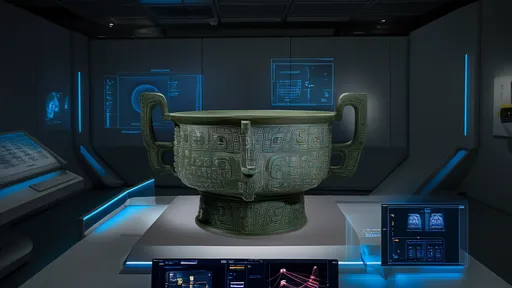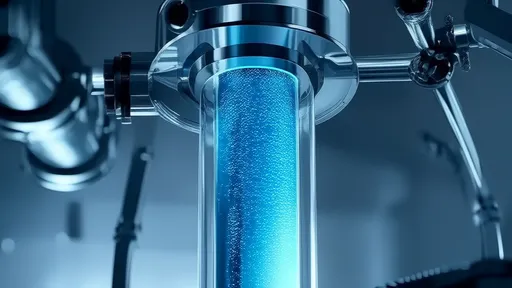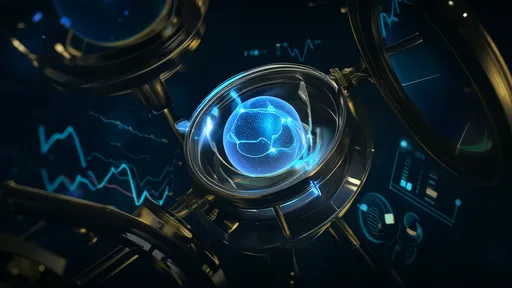The field of quantum chemistry has witnessed remarkable advancements in recent years, driven by the increasing demand for accurate molecular simulations. As computational power grows and algorithms become more sophisticated, the need to validate the precision of these simulations has become paramount. Researchers across academia and industry are investing significant efforts to ensure that quantum chemical models can reliably predict molecular properties, reaction mechanisms, and spectroscopic data.
Quantum chemical simulations have become indispensable tools in modern chemistry, enabling scientists to explore molecular systems at an unprecedented level of detail. These simulations rely on solving the Schrödinger equation or its approximations to describe the behavior of electrons and nuclei in molecules. However, the accuracy of these calculations depends critically on the choice of theoretical methods, basis sets, and computational parameters. Without rigorous validation against experimental data or high-level theoretical benchmarks, the reliability of such simulations remains questionable.
The validation process typically involves comparing calculated molecular properties with experimental measurements or highly accurate reference calculations. Properties such as molecular geometries, vibrational frequencies, electronic excitation energies, and thermodynamic quantities serve as important metrics for assessing the performance of quantum chemical methods. For small molecules, where experimental data is abundant and high-level theoretical benchmarks are feasible, this validation process is relatively straightforward. However, challenges arise when dealing with larger systems or more complex chemical phenomena.
One of the critical aspects of precision validation is understanding the limitations of different quantum chemical methods. Density Functional Theory (DFT), while computationally efficient for medium-sized systems, can show significant errors depending on the choice of exchange-correlation functional. Wavefunction-based methods like coupled cluster theory typically offer higher accuracy but at substantially greater computational cost. The development of new methods that balance accuracy and efficiency continues to be an active area of research in quantum chemistry.
Recent studies have highlighted the importance of systematic benchmarking in assessing quantum chemical methods. Large-scale validation projects have emerged, comparing hundreds of methods against comprehensive datasets of molecular properties. These efforts have revealed surprising insights about the performance of popular methods across different chemical systems. For instance, some functionals that perform well for organic molecules may fail dramatically for transition metal complexes or weakly bound systems.
The role of basis sets in quantum chemical accuracy cannot be overstated. Even with an excellent theoretical method, inadequate basis sets can lead to significant errors in calculated properties. Modern basis set development focuses on achieving optimal balance between accuracy and computational cost, with particular attention to properties like molecular energies, electron densities, and response properties. The validation process must therefore consider both the electronic structure method and the basis set as interdependent components affecting overall accuracy.
Experimental collaboration has proven invaluable for quantum chemistry validation. Synergies between theoretical and experimental chemists have led to improved understanding of molecular systems where neither approach alone could provide definitive answers. Spectroscopic techniques, in particular, offer rich datasets for validating quantum chemical predictions of molecular vibrations, electronic transitions, and magnetic properties. The interplay between theory and experiment often leads to refinements in both quantum chemical methods and experimental interpretations.
Emerging applications in materials science and biochemistry present new challenges for quantum chemical validation. Large, complex systems with thousands of atoms require methods that scale favorably while maintaining acceptable accuracy. Fragment-based approaches and embedding schemes have shown promise in extending accurate quantum chemical treatments to larger systems. However, validating these methods requires careful consideration of how errors propagate in fragmented calculations and how boundary effects influence the results.
The development of machine learning potentials trained on quantum chemical data has introduced new dimensions to the validation challenge. While these approaches can achieve near-quantum-chemical accuracy at dramatically reduced computational cost, their reliability depends heavily on the quality and coverage of the training data. Rigorous validation protocols must be established to ensure that machine learning models can generalize well to chemical space beyond their training sets.
Looking ahead, the quantum chemistry community faces the ongoing challenge of developing standardized validation protocols that can keep pace with methodological innovations. As new theoretical approaches emerge and computational resources continue to grow, the criteria for what constitutes acceptable accuracy may evolve. What remains constant is the fundamental need for quantum chemical simulations to provide reliable, predictive power that can guide chemical discovery and materials design.
The validation of quantum chemical simulations represents more than just a technical exercise—it is essential for building confidence in theoretical predictions and ensuring their utility in solving real-world chemical problems. From drug design to catalyst development, accurate quantum chemical models can significantly accelerate discovery processes when their limitations are properly understood. As the field progresses, continued emphasis on rigorous validation will be crucial for maintaining the integrity and impact of quantum chemistry in the broader scientific community.

By /Aug 7, 2025

By /Aug 7, 2025

By /Aug 7, 2025

By /Aug 7, 2025

By /Aug 7, 2025

By /Aug 7, 2025

By /Aug 7, 2025

By /Aug 7, 2025

By /Aug 7, 2025

By /Aug 7, 2025

By /Aug 7, 2025

By /Aug 7, 2025

By /Aug 7, 2025

By /Aug 7, 2025

By /Aug 7, 2025

By /Aug 7, 2025

By /Aug 7, 2025

By /Aug 7, 2025

By /Aug 7, 2025

By /Aug 7, 2025